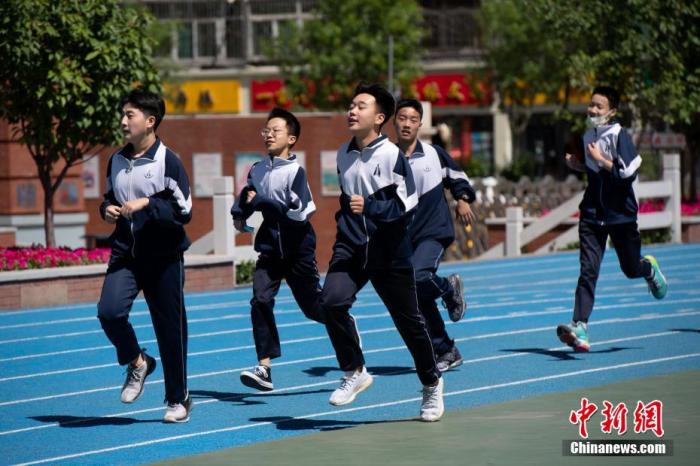Chinanews.com, October 23. According to the website of the National Health Commission, in order to actively prevent overweight and obesity in children and adolescents, the National Health Commission and the Ministry of Education and other six departments formulated the "Child and Adolescent Obesity Prevention and Control Implementation Plan" (hereinafter referred to as " The Plan) was issued recently.
The "Plan" puts forward prevention and control goals. In terms of national goals, the annual average increase in overweight and obesity rates from 2002 to 2017 is the baseline, and the average annual increase in overweight and obesity rates for children and adolescents aged 0-18 from 2020 to 2030 is based on the baseline. A 70% decrease will lay the foundation for achieving zero growth in overweight and obesity among children and adolescents.
Data map: On May 11th, at Yuying Middle School in Taiyuan City, Shanxi Province, first-year students returning to school and resuming classes had a physical education class on the playground.
Photo by China News Agency reporter Wei Liang
In addition, the "Plan" also clarified sub-regional targets.
According to the current status of overweight and obesity rates among children and adolescents in various regions, the provinces (autonomous regions and municipalities) of the country are divided into three regions with high, medium and low prevalence levels.
From 2020 to 2030, the average annual growth rate of overweight and obesity rates of children and adolescents in high-endemic areas will be reduced by 80% from the baseline, and the average annual growth rate of overweight and obesity rates of children and adolescents in mid-endemic areas will be reduced by 70% from the baseline. In low-endemic areas The average annual growth rate of overweight and obesity rates in children and adolescents decreased by 60% from the baseline.
The "Plan" stated that with the rapid development of my country’s economy and society and the significant improvement in people’s living standards, profound changes have taken place in the dietary structure and lifestyle of children and adolescents. In addition to factors such as heavy schoolwork and popularization of electronic products, children and adolescents have unbalanced nutrition and physical activity. Insufficiencies are widespread, and the rate of overweight and obesity is rising rapidly, which has become an important public health problem that threatens the physical and mental health of children and adolescents in my country.
Obesity in childhood and adolescence will increase the risk of premature occurrence of chronic diseases such as adult obesity, cardiovascular and cerebrovascular diseases and diabetes, posing a threat to health and bringing a heavy burden to individuals, families and society.
The "Plan" proposes to strengthen family responsibilities and give full play to the role of parents and caregivers.
For example, help children develop scientific dietary behaviors, cultivate children's active physical activity habits, do a good job of monitoring the weight and growth of children and adolescents, and strengthen community support.
In addition, it is necessary to strengthen school responsibilities to maintain a healthy weight for children and adolescents.
The "Plan" pointed out that it is necessary to run nutrition and health classes, improve school food supply, and ensure school physical activity time.
Intensify physical education and extracurricular exercises, all local schools must strictly implement the national physical education and health curriculum standards, and in accordance with relevant regulations, include physical education results in the middle school entrance examination and other assessments.
Teachers are not allowed to "drag the class" or start classes in advance to ensure that students take a break and engage in appropriate physical activities between classes to reduce static behavior.
Ensure that the daily outdoor activities of kindergarten children are not less than 2 hours under normal weather conditions, of which sports activities are not less than 1 hour.
Primary and middle school students should spend more than 1 hour in the school with moderate and above-intensity physical activity every day, and ensure that at least 3 hours of high-intensity physical activity per week, muscle strength exercises and strong bone exercises.
The "Plan" also mentioned that it is necessary to strengthen the responsibility of medical and health institutions and optimize weight management services.
Such as strengthening weight management during pregnancy, strengthening weight management of children and adolescents, and strengthening interventions for obese children.
The "Plan" also stated that it is necessary to strengthen government responsibilities and strengthen supportive environmental construction.
Mainly to strengthen the popularization of obesity prevention and control knowledge and skills, strengthen food marketing management, and improve children and adolescent sports facilities.

